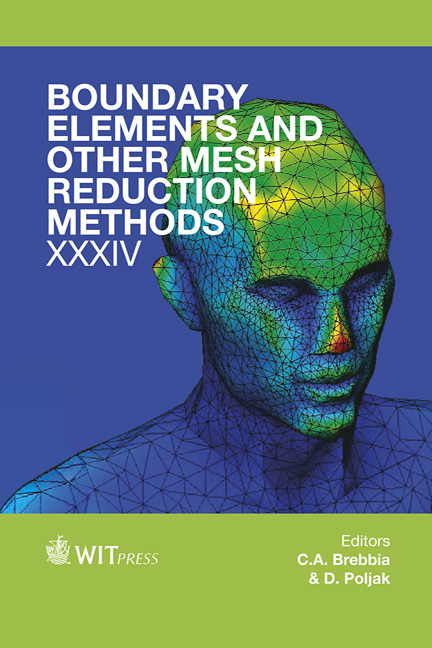Boundary Element Analysis Of Deformation And Movement Of A Capsule And A Red Blood Cell Close To The Wall
Price
Free (open access)
Transaction
Volume
53
Pages
9
Page Range
191 - 199
Published
2012
Size
546 kb
Paper DOI
10.2495/BE120171
Copyright
WIT Press
Author(s)
S. Nix1, Y. Imai2, T. Ishikawa2 & T. Yamaguchi1
Abstract
A capsule is defined as a liquid drop enclosed by an elastic membrane. The study of capsule behavior near a stationary surface has a number of biological applications, such as red blood cells in the cardiovascular system. However, near-wall behavior of capsules has not been established well. In this study, we investigate the motion of initially spherical and biconcave capsules in simple shear flow near an infinite plane using a boundary integral method coupled to a finite element method. We find that the deformation of a capsule depends on its initial shape, orientation, and capillary number (Ca). However, the lift velocity of a capsule is dependent on its steady state deformation and distance from the wall. The dependence of lift velocity on deformation may help to explain phenomena such as leukocyte margination. Keywords: boundary integral method, finite element method, capsule flow, lateral migration. 1 Introduction Red blood cells (RBCs) have been observed to exhibit higher deformability than other cells in the blood, such as white blood cells (WBCs) [1]. Furthermore, while the concentration of RBCs in microcirculation is highest near the center of the vessel, WBCs are found disproportionately near the vessel wall, particularly at low shear rates [2]. Several mechanisms have been proposed for this difference in lateral migration, such as an exclusion effect by the RBCs on a WBC, as well as hydrodynamic forces.
Keywords
boundary integral method, finite element method, capsule flow, lateral migration.





